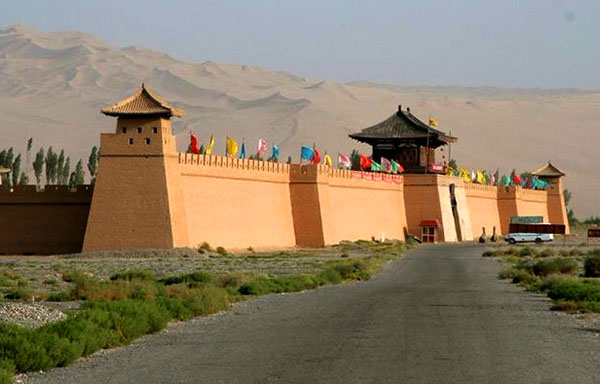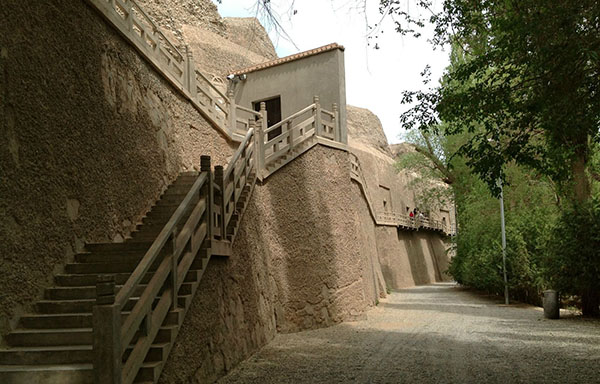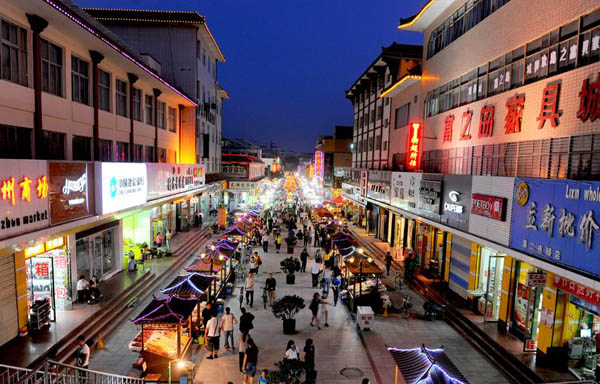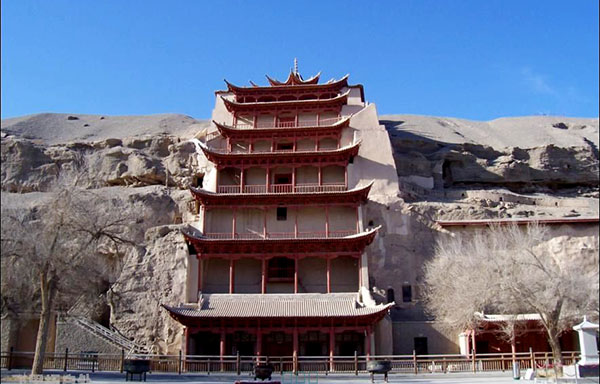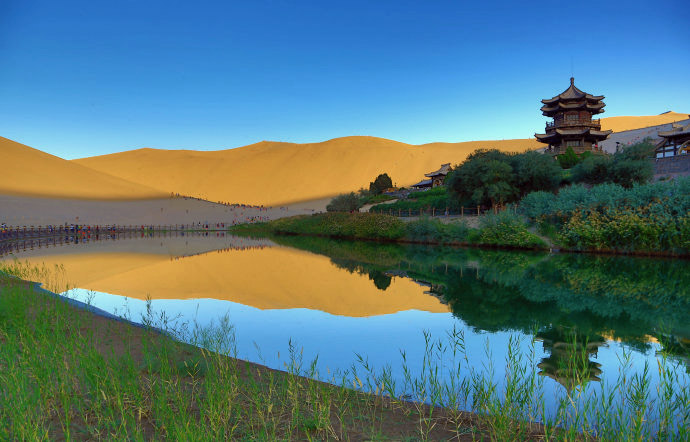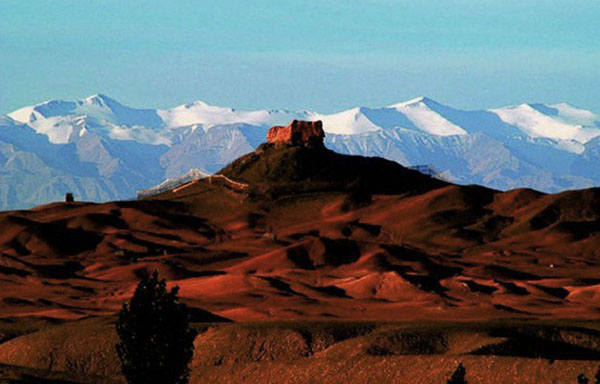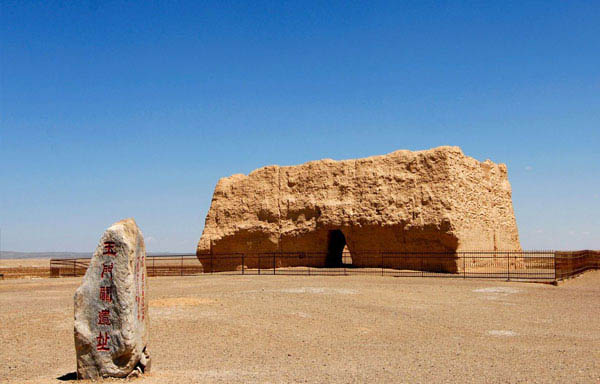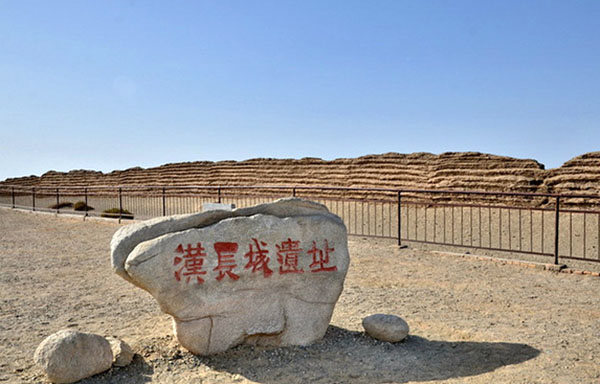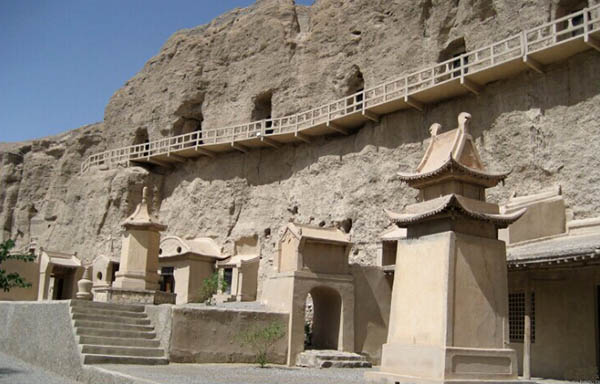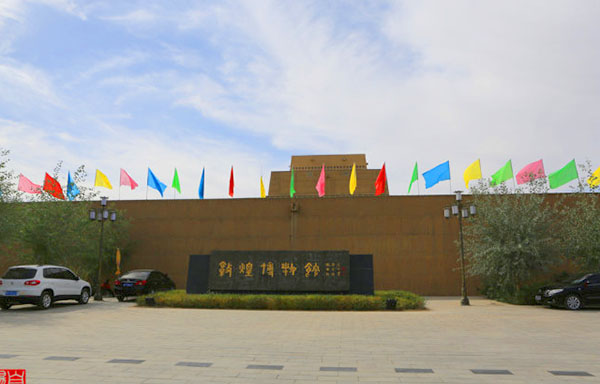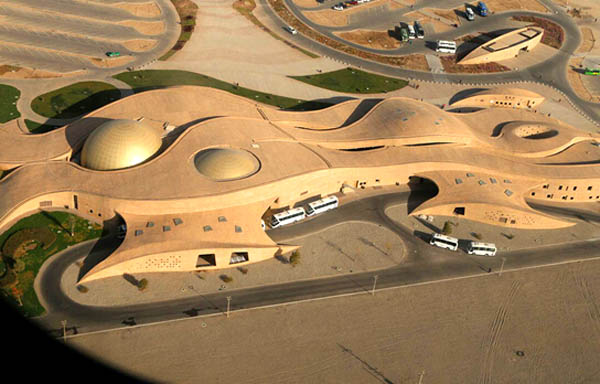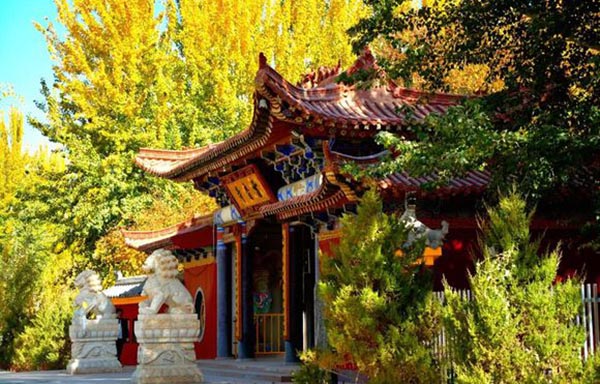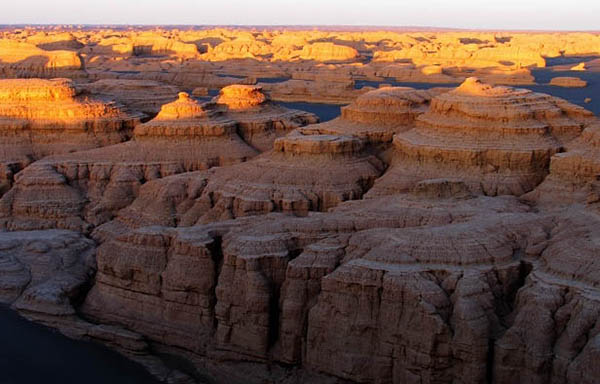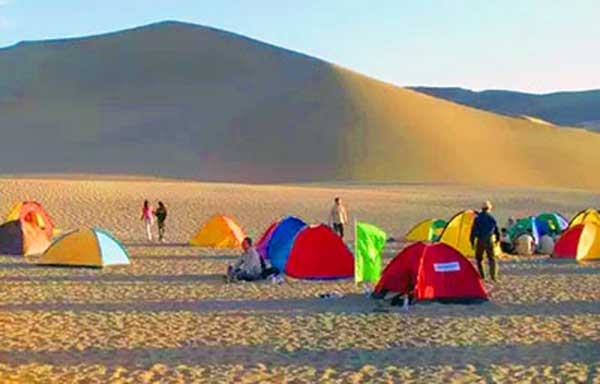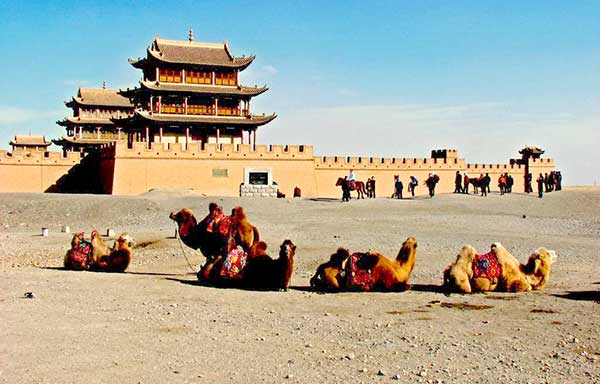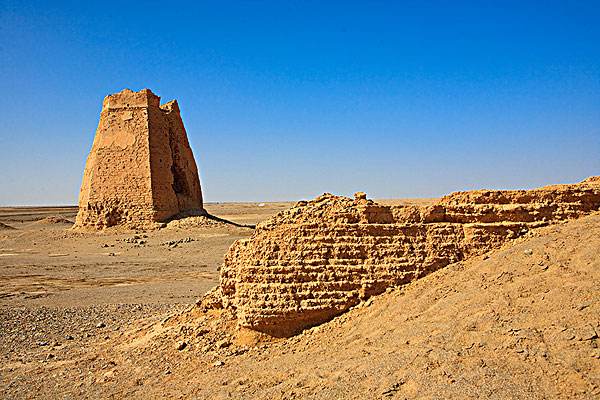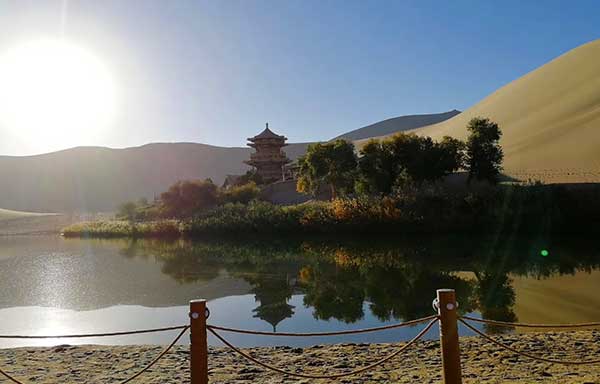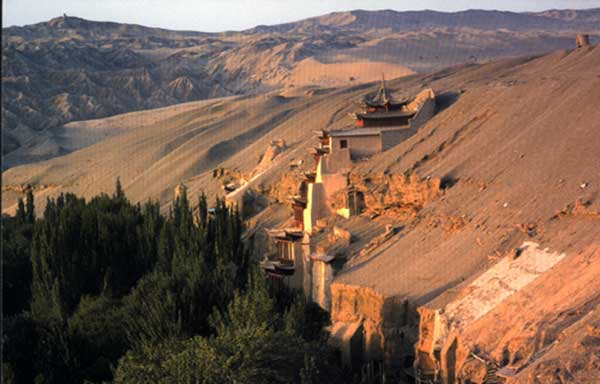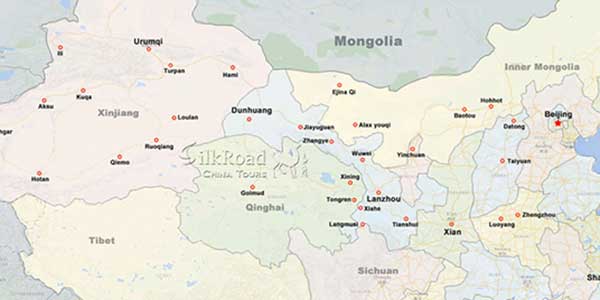 Yunlin Grottos lie 70 kilometers to the south of Anxi County, 180 kilometers to the east of Dunhuang.
Yunlin Grottos lie 70 kilometers to the south of Anxi County, 180 kilometers to the east of Dunhuang.
The Yunlin Grottos are chiseled in the cliffs on both the east and west sides of the Yulin River. The east cliff has 30 grottos and the west has 11, with a distance of more than 100 meters between them. It used to be called Ten-Thousand Buddha Gorge. The grottos began to be chiseled and sculpted during the Northern Wei Dynasty (386-534), and was enlarged in the later dynasties such as the Tang (618-907), Five Dynasties (907-960), Song (960-1279), the Western Xia (1038-1227), Yuan (1271-1368) and so on. There are more than 1,000 square meters of frescoes, and more than 100 colored sculptures extant there.
The grottos in different forms include Central Pole grotto, Fudou grotto with an oblong or square plane, and the Big Buddha with oval plane and arched roof. Because of the single-lined passageways outside the gates of the grottos, about 15 meters long, it is not easy for the dust storms to intrude, which reduce the damages to the grottos. These grottos have close relationship with the Mogao Grottos in Dunhuang, both of which are Sister Grottos on the Silk Road.
The frescoes inside the grottos include the statues of Buddha, Bodhisattvas, and the paintings of Buddhism stories, flowers and beasts, patterns and ornaments, providers, and other figures. Among them, the No.25 Grotto is the most exquisite and precious one. In the main room are two the paintings about Maitreya and the Pure Land in the West, with grand spectacle and intact composition. Manjusri Bodhisattva riding on a lion, Samantabhadra Bodhisattva riding on an elephant, and the Northern and Southern Heavenly Kings are graphically carved with smooth and skilful strokes, and look vivid and lifelike. In the Big Buddha Hall of the No.6 Grotto, there is a statue of Sakyamuni, 20 meters high, being golden all over the body, which are stunningly beautiful. In the No.29 Grotto chiseled in the West Xia, the male and female providers all wear the hat and clothes of the Western Xia's style, and the inscriptions beside them are also written in the Western Xia language. The frescoes made in those dynasties such as the Five Dynasties, the early years of the Song Dynasty, the Western Xia Dynasty and the Yuan Dynasty, not only follow the themes of the past dynasties, but also adopt some new subject matters such as the Water and Moon Kwan-yin, Datura Stramonium of the Secret Sect of Buddhism and so on, whose artistic style is utterly different from those of the past dynasties.
Inside the grottos chiseled during the Western Xia Dynasty, the image of Sun Wukong has appeared as a monkey in some paintings of the story that Xuanzang, a Buddhist scholar of the Tang Dynasty, overcame difficulties and obstacles and finally reached India for Buddhist scriptures. This may be the first artistic image of Sun Wukong and is more than 300 years earlier than that inthe Pilgrimage to the West.
Gallery
Attractions in the area
Related Tours
General Information
Alias: Ten Thousand Buddha Caves
Loc: 170 km from Dunhuang
Entrance: 55 RMB
Open Time: 9:00 - 17:30
Relevant blogs
-
What is the connection between "dragons" and "snakes
In traditional Chinese culture, the snake has a dual identity of auspiciousness and danger. Ancient people believed that the snake not only possesses divine cha
-
Endangered Przewalski's Horses Spotted at Dunhuang Yume
<p>In early February, a group of special "visitors"—the Przewalski's horses—appeared at the Dunhuang Yumen Pass scenic area in Gansu Province, a U
-
The Fourth Dunhuang Cultural Tourism Supplier Conference
On the morning of February 18th, the Fourth Dunhuang Cultural Tourism Supplier Conference in Northwest China commenced at the Dunhuang International Convention
-
Hu-style Lamb Stew with Flatbread
The Historical Origins of Hu-style Lamb Stew with FlatbreadFor thousands of years, Dunhuang has been a crucial town on the ancient Silk Road. The people living
-
During the Spring Festival holiday, Dunhuang City achiev
The city's major tourist attractions were bustling with visitors who came to explore the ancient city, admire the desert landscapes, experience the Silk Road c
-
Dunhuang fresh grapes were exported to Iraq for the fir
On January 6th, 42 tons of red table grapes, under the supervision of Dunhuang Airport Customs under Lanzhou Customs, set off from Shekou Port for Iraq. This is






